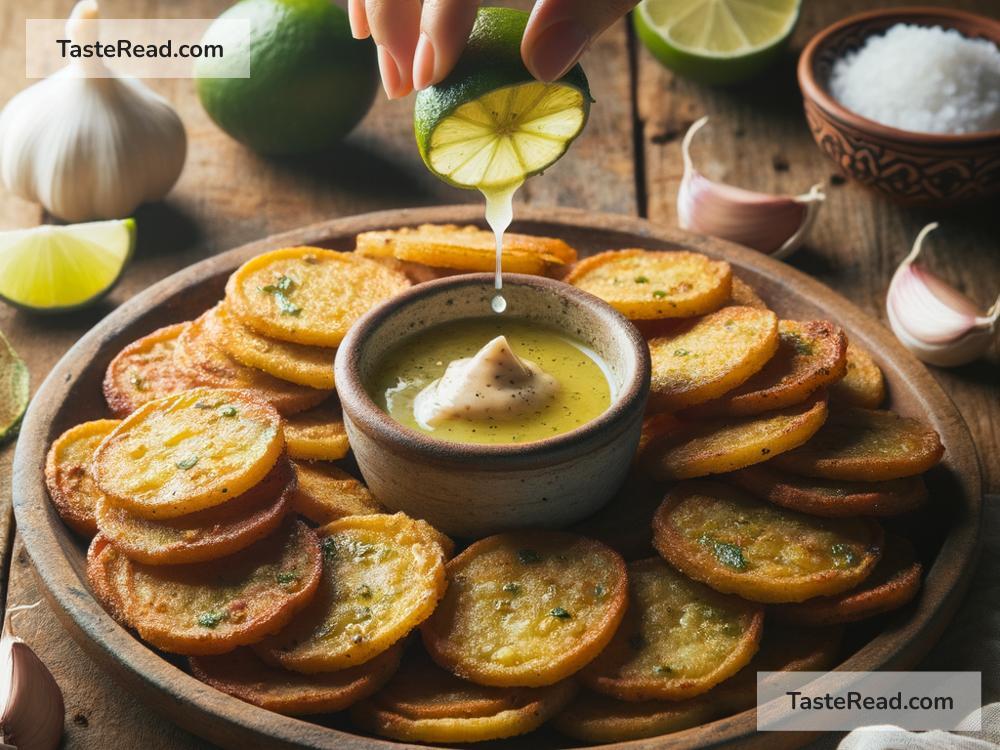How to Make Traditional Cuban Tostones: A Journey into Flavors!
Cuban cuisine is a splendid mix of Spanish, African, and Caribbean flavors, offering an adventure for the taste buds with every dish. Among the island’s culinary gems are tostones – twice-fried plantain slices that are as addictive as they are simple to make. Tostones, with their crispy exterior and tender inside, serve as a perfect snack, side dish, or even a base for appetizers. In this article, we’ll embark on a culinary journey to Cuba without leaving your kitchen by learning how to make traditional Cuban tostones.
What You Need to Get Started
Before we dive into the cooking process, let’s gather our ingredients and tools. To make tostones, you’ll need:
- Green plantains: Unlike their banana cousins, plantains are starchy and less sweet. For tostones, you’ll want them green and firm.
- Oil for frying: A neutral oil like vegetable or canola oil is perfect as it won’t impart any additional flavor to your tostones.
- Salt: To season your tostones to perfection.
- Tools: A sharp knife, a tostone press (or a bottom of a heavy mug or plate if you don’t have one), paper towels, and a skillet or deep fryer.
The Step-by-Step Guide to Perfect Tostones
Step 1: Prep the Plantains
Start by peeling your green plantains. This can be a bit tricky due to their firmness, so make a lengthwise cut through the skin (not too deep!) and remove the skin in sections. Once peeled, slice the plantains into thick rounds, about 1 inch (2.5 cm) thick.
Step 2: The First Fry
Heat your frying oil in a skillet or deep fryer to about 375°F (190°C). If you’re not sure of the temperature, you can test it by dropping a small piece of plantain in the oil. If it sizzles, you’re ready to go. Gently add your plantain slices to the oil, making sure not to overcrowd the pan. Fry them for about 1.5 to 2 minutes on each side or until they are just starting to turn golden. They won’t be fully cooked at this stage, and that’s okay! Remove the slices with a slotted spoon and drain them on paper towels.
Step 3: Smash ‘Em!
Here’s where the fun starts – and where tostones get their signature look and texture. Once the fried plantain slices have cooled enough to handle (but are still warm), use a tostone press to flatten them. If you don’t have a press, simply place a plantain slice under a thick-bottomed mug or plate and press down firmly until it’s about half its original thickness.
Step 4: The Second Fry
Once all your plantain slices have been smashed, it’s time for their final fry. Bring the oil back up to temperature and add the flattened plantains back into the skillet or fryer. This time, you’ll want to fry them until they’re golden and crispy, which should take about 3 minutes per side. Use your slotted spoon to transfer the finished tostones to a plate lined with paper towels to drain off any excess oil.
Step 5: Season and Serve
While your tostones are still hot, sprinkle them with salt to taste. This final touch will elevate their flavor and make them truly irresistible. Serve your tostones as they are, or with a dipping sauce like mojo (a garlicky citrus sauce) for an extra layer of flavor.
Tips for Tostones Triumph
- Don’t Skip the Double Fry: The first fry cooks the plantains through, while the second fry ensures a crispy texture that’s key to the perfect tostone.
- Timing Is Everything: Make sure your oil is at the right temperature before starting each fry to avoid soggy or burned tostones.
- Experiment with Flavors: While salt is traditional, feel free to get creative with your seasonings. A sprinkle of garlic powder or a pinch of cayenne pepper can add an exciting twist.
Wrapping It Up
The beauty of Cuban tostones lies in their simplicity and the joy they bring to the table. Whether you’re looking for a snack to share with friends, a unique side dish for dinner, or simply a tasty way to explore Cuban cuisine, tostones offer a delightful experience. By following these simple steps and tips, you’ll be able to bring a piece of Cuba into your home kitchen and impress your loved ones with your culinary skills. ¡Buen provecho!


